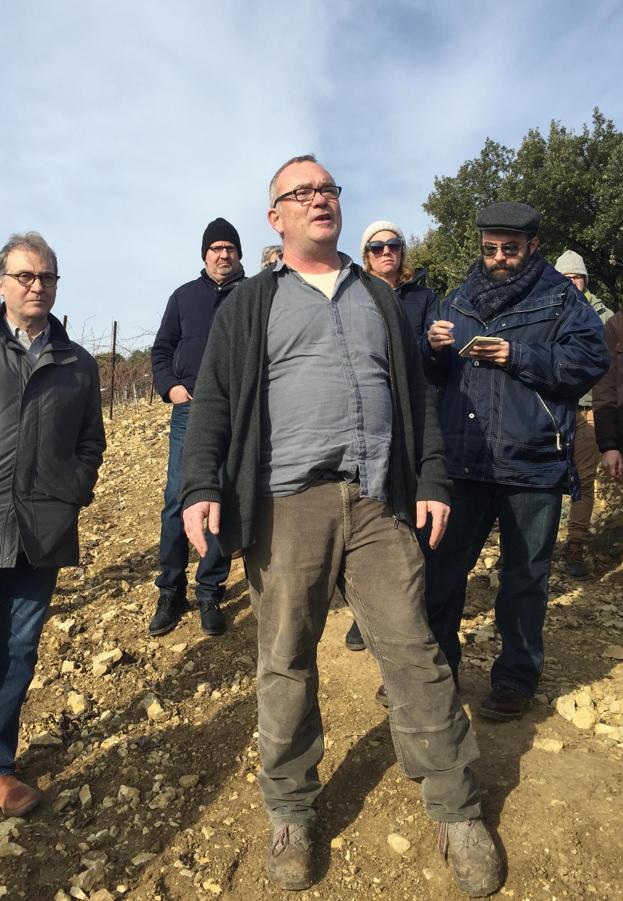
On the heels of a tour through New England, French winemaker Eric Texier has plenty to say about terroir, mentoring new winemakers, and a trend he sees among young American wine drinkers.
“They care about how wine is made, whether it’s from a big company or a small grower,’’ he says. “Very often, these young people say, ‘I’m taking care about what I’m eating, so I am also taking care about what I’m drinking.’’’ That preference, he explains, is part of a growing interest in natural wines — artisanal pours, crafted with minimal intervention, made from the fruits of organic or biodynamic agriculture. These consumers become loyal customers. “That’s good for me,’’ says the winemaker, whose bottles would never be mistaken for manipulated, commercial pours.
Texier, who lives and works northwest of Lyon, France, in Charnay-en-Beaujolais, makes a portfolio of wines in this natural manner, sourcing grapes from his vineyards in the Northern and Southern Rhone. He did not set out to become a winemaker. Unsatisfied with his career as an engineer in the nuclear industry, he delved into viticulture and winemaking in the early ’90s, seeking out growers and producers he admired. He interned with Belgian-born winemaker and merchant Jean-Marie Guffens, then based in Burgundy, whose independent, against-the-grain approach resonated with Texier’s own ideas about viticulture and winemaking.
Like those who influenced him, the winemaker feels strongly about matching the right grape to terroir, the particular growing environment that includes soil and climate. “I still think the area of limestone around [the Southern Rhone municipality of] Orange is an amazing place to grow grenache,’’ he says of the widely planted varietal. The matching of grape to terroir is time-tested. The region has a track record of winegrowing that reaches back 2,000 years.
An outstanding example of what Texier does with grenache is in a bottle of Cotes du Rhone Villages, from a vineyard in Vaison-la-Romaine, a half-hour drive northwest of Orange. While other producers blend with grapes like syrah and mourvedre, Texier believes grenache can stand confidently on its own. A glass offers pretty, red-skinned plum aromas, along with scents that are both ferrous and savory. The palate is snappy and tart, with appetizing bitterness and minerality that support ripe red fruit and chewy tannins. The winemaker doesn’t filter, leaving in the components that make for a juicy, mouth-filling pour.
Young American winemakers frequently ask if they can intern with him for the autumn grape crush. He tells them no. “If they are going to do an internship, they have to stay with me through the growing season through harvest,’’ he says. The experience of getting to know the land and tending the vines over time is essential to how he sees the process.
“Winemaking is just 2 percent of making wine,’’ Texier explains. “It’s a detail. It’s easy to learn the details.’’
Eric Texier Cotes du Rhone Villages Vaison-la-Romaine 2013, around $20, is available at the Wine Bottega, North End, 617-227-6607; Gordon’s DTX, Downtown Crossing, 617-870-6700.
Ellen Bhang can be reached at bytheglass@globe.com.



